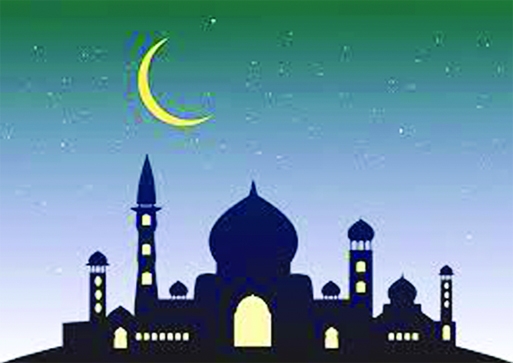
A. T. Araefin :
In Arabic, “Eid” means festival or feast and there are two major “Eids” celebrated by Muslims. The first, Eid al-Fitr, Arabic for “festival of the breaking of the fast,” occurs at the end of Ramadan, a month-long period when Muslims fast daily from sunrise to sunset. Also known as Siaam, it is also one of the five pillars of the Islamic faith. Ramadan marks the month Allah revealed the first verses of the Quran to the Prophet Muhammad.
The second, Eid al-Azha takes place about two months after Eid al-Fitr at the end of the annual Hajj pilgrimage to Mecca. The dates of both holidays are the same every year according to the Islamic lunar calendar. The Western 365-day Gregorian calendar is about 11 days longer, causing the dates to change each year.
Eid al-Azha, or the “Feast of Sacrifice,” signifies the willingness of the Prophet Hazrat Ibrahim (AS), known as Abraham in Christianity and Judaism, to sacrifice his son, Hazrat Ismail (AS) as ordered by Allah. It is one of Islam’s most important holidays.
Usually lasting three to four days, and celebrated by millions of Muslims worldwide, the holiday begins on the 10th day of the Muslim calendar lunar month of Dhul-Hijja, at the time of Hajj, the annual pilgrimage to Mecca.
Considered the holiest of the two Eids, the other being Eid al-Fitr, or “Festival of Breaking the Fast,” that commemorates the end of Ramadan, it is one of two major Muslim holidays celebrated across the globe each year.
In the Quran, Hazrat Ibrahim (AS) has a dream in which Allah commands him to sacrifice his son, Ismail, as a sign of obedience to Allah. In the writing, Shaytaan, or Satan attempts to confuse Ibrahim and tempt him to not go through with the act, but Hazrat Ibrahim (AS) drives him away.
However, as Hazrat Ibrahim (AS) is about to kill Ismail, Allah stops him, sending the Angel Hazrat Jibreel (AS), or Gabriel, with a ram to sacrifice instead. The commemoration of the Azha, which is Arabic for sacrifice, takes place on the final day of the Hajj pilgrimage, the fifth pillar of Islam.
Because Hazrat Ibrahim (AS) was allowed to sacrifice a ram instead of his son, Eid al-Azha is traditionally celebrated on its first day, by those with means to do so, with the symbolic sacrifice of a lamb, goat, cow, camel or other animal that is then divided into threes to be shared equally among family, friends and the needy.
Muslim worshippers typically perform a communal prayer, or ?alat, at dawn on the first day of the festival, attend Mosque, donate to charities and visit with family and friends, also exchanging gifts.
Eid al-Azha is celebrated on the final day of the annual Hajj pilgrimage to Mecca, the holiest city in Islam, in western Saudi Arabia. All Muslims able to do so are asked to make the five-day Hajj journey at least once in their lifetime, and 2 million do so each year.
At Mecca, worshippers visit the Ka’bah shrine, Islam’s most important monument, in the Grand Mosque. Also known as the “Black Stone,” the Ka’bah is believed to have been constructed by Hazrat Ibrahim and his son Hazrat Ismail. Pilgrims also visit the Jamarat Bridge, where Hazrat Ibrahim was believed to have thrown stones at the devil.

